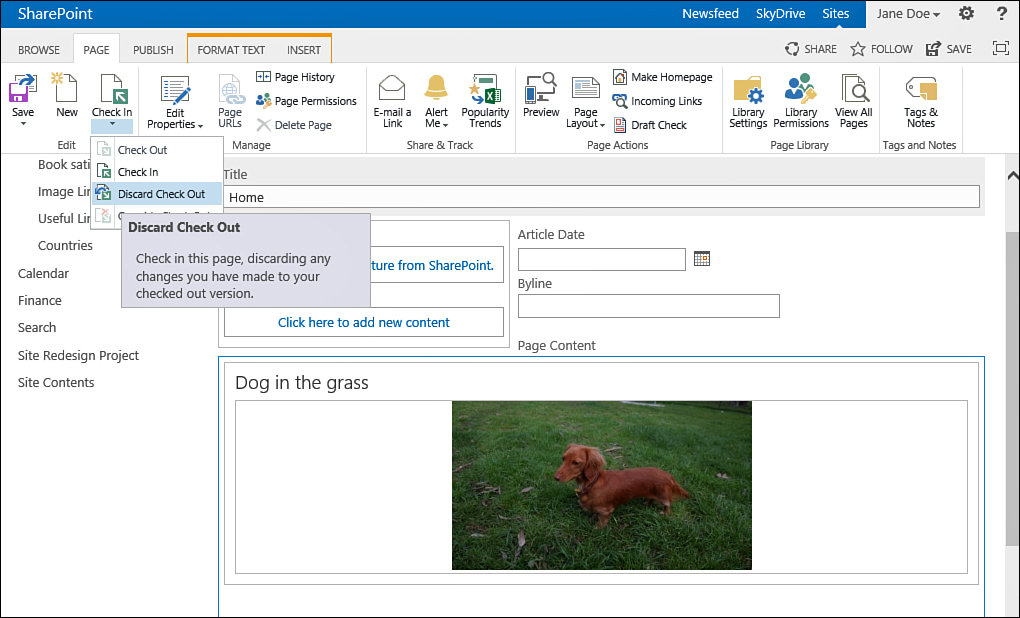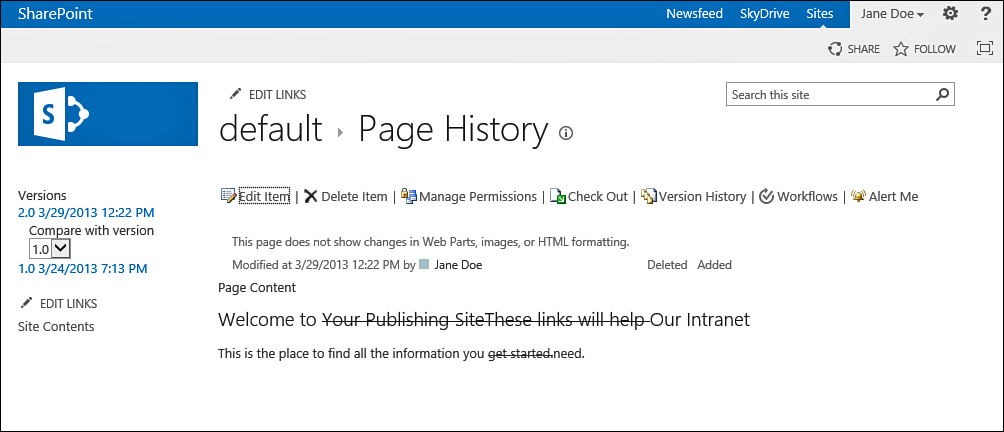Discard the Check-out of a Page
Scenario/Problem: Often you start editing a page and then either change your mind or regret a change and want to roll back and start again.
Solution: To start over, just discard the check-out of the page. This section explains how to accomplish that.
The option to discard a check-out is
available only when the page is in a document library that tracks
versions and requires a check-out, such as in publishing websites.
Pages that are not in such document libraries do not give you the
option, and any change you make is saved; therefore, you must manually
roll it back.
To discard the check-out of a page, use the
built-in Discard Check Out option for that page from the library view,
exactly as you would discard a check-out of a file in a document
library.
However, an easier and more accessible way to discard the check-out of
the page is through the Page ribbon. In the Page ribbon, open the
drop-down menu under the Check In button, and then select the Discard
Check Out option, as shown in Figure 1.

FIGURE 1. Use the Page menu to get to the Discard Check Out option.
Compare Versions of a Page
Scenario/Problem:
Often you want to restore a page to a previous state (before some
changes were made to the page), but you want to compare differences
between the versions before making up your mind about which one to
restore.
Solution:
Pages that reside in a document library that supports versioning enable
you to restore previous versions of the pages, just like any other
files in document libraries that support versioning. However, with
pages, you also get the option to view the changes that were made to
them between each version and compare them.
Note
Page changes that are tracked by versioning
include changes to add and remove web parts and edit content in the
page’s editing controls, such as the text editing control and image
editing control. However, changes made to the contents in the web parts
on the page do not count as part of the page’s contents and are not
restored when you restore a previous version. They are also not shown
in the comparison of versions.
To compare the changes between versions of a
page, switch to the page’s Page ribbon and click the Page History
button in the ribbon.
The page that opens shows the changes made in
each version. The list of versions is in the left pane, and the current
text with change tracking is in the right pane (see Figure 2).

FIGURE 2 The version comparison screen.
When a change is made to a piece of content
in the page (for example, the text in a text editing control on the
page), the section in the version comparison page shows the old value
and the new value, indicating what editing was done (refer to Figure 2).
Text that was deleted appears with strikethrough. If you wrote over a
piece of text, the new text is shown after the old text as was shown in
Figure 2.
You can browse the other versions of the page
by clicking the version date and time on the left. You can delete or
restore the version by using the toolbar in the page.